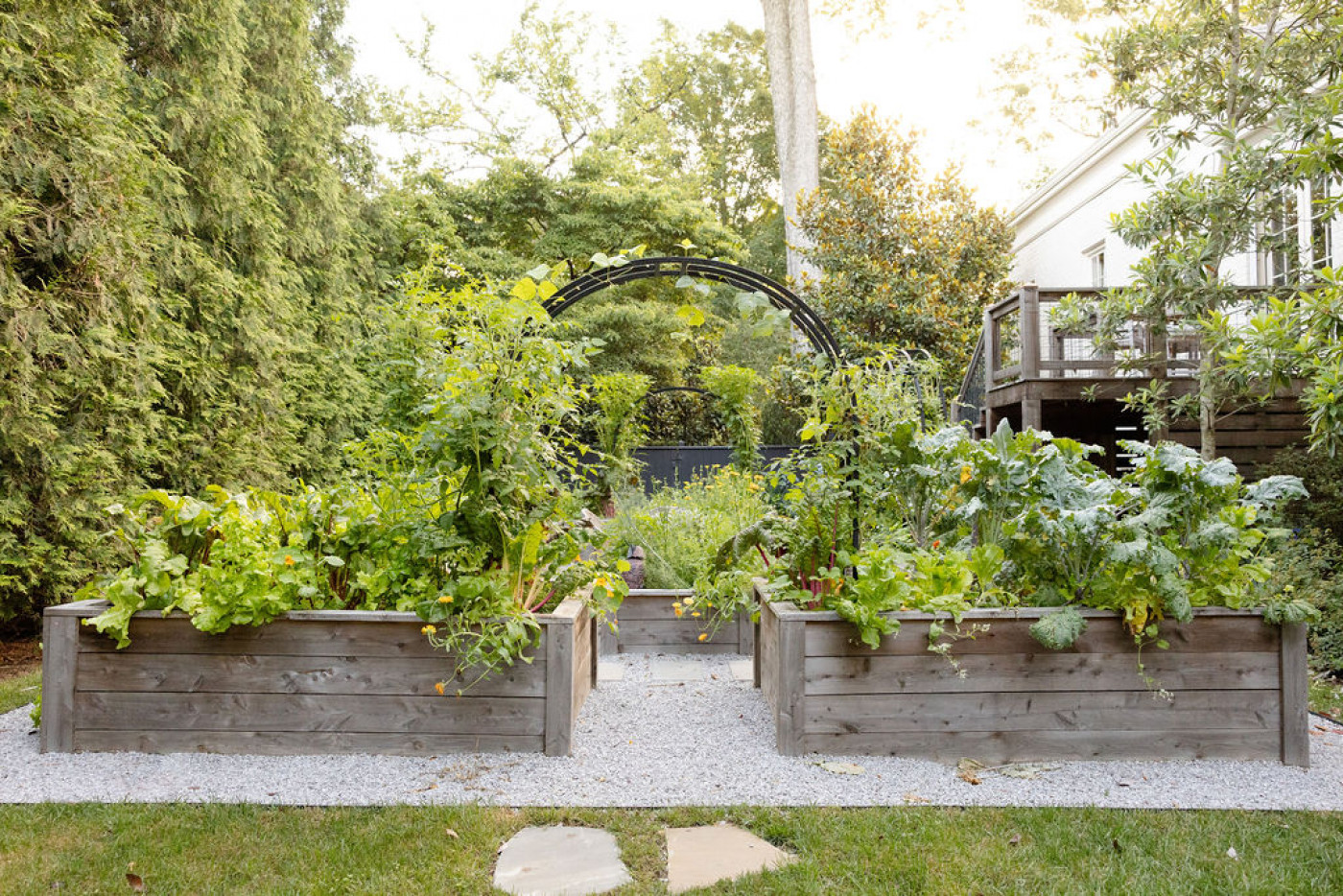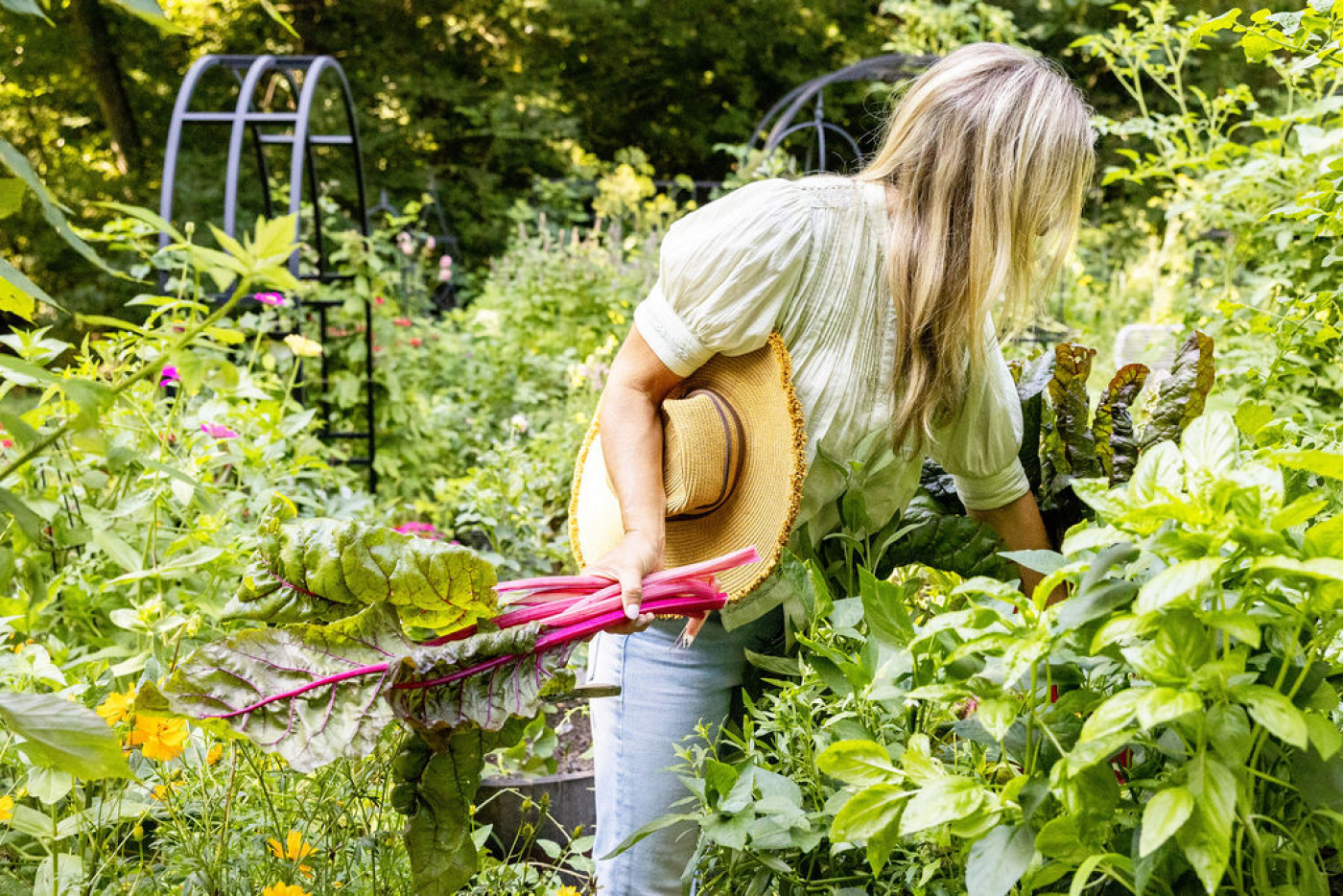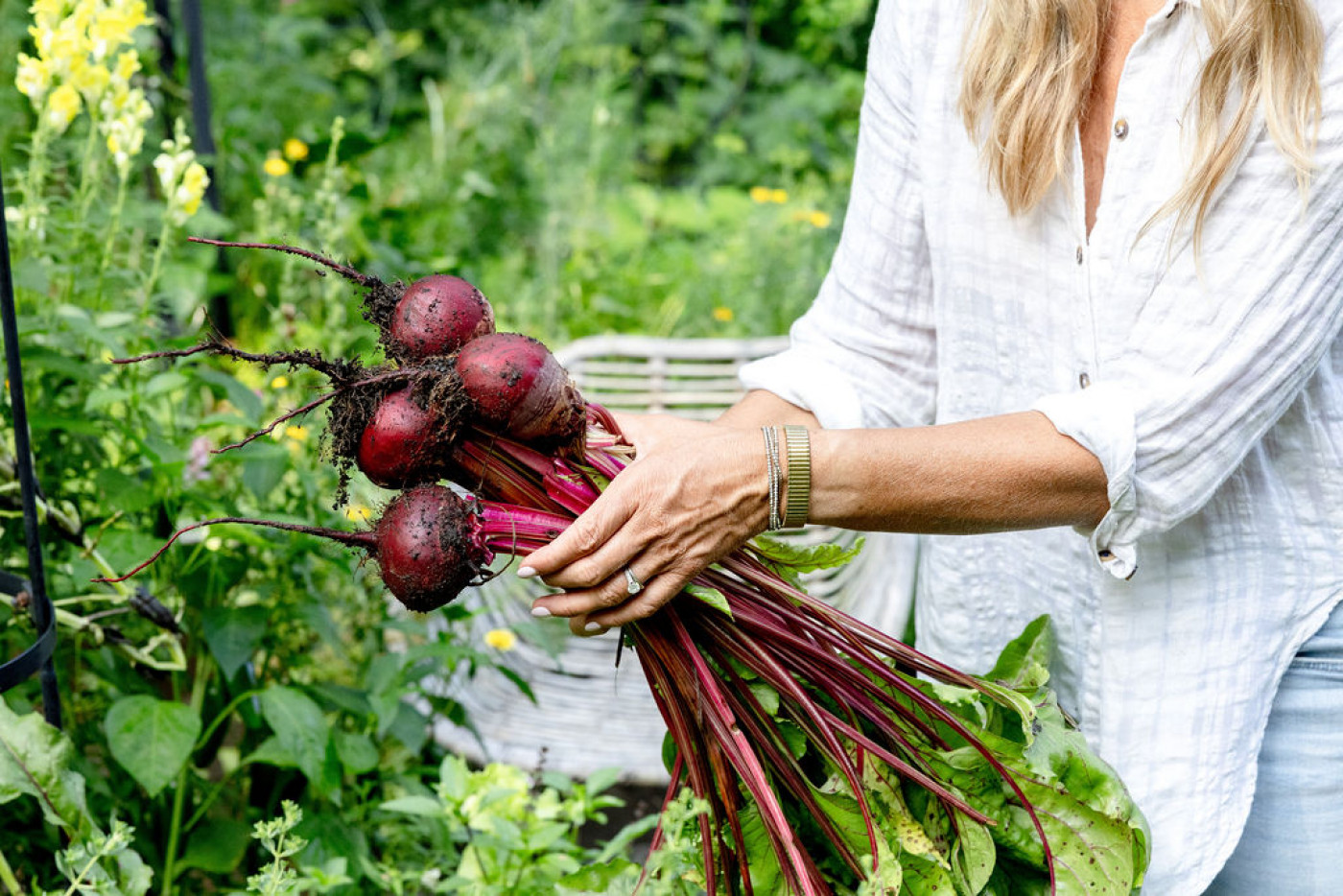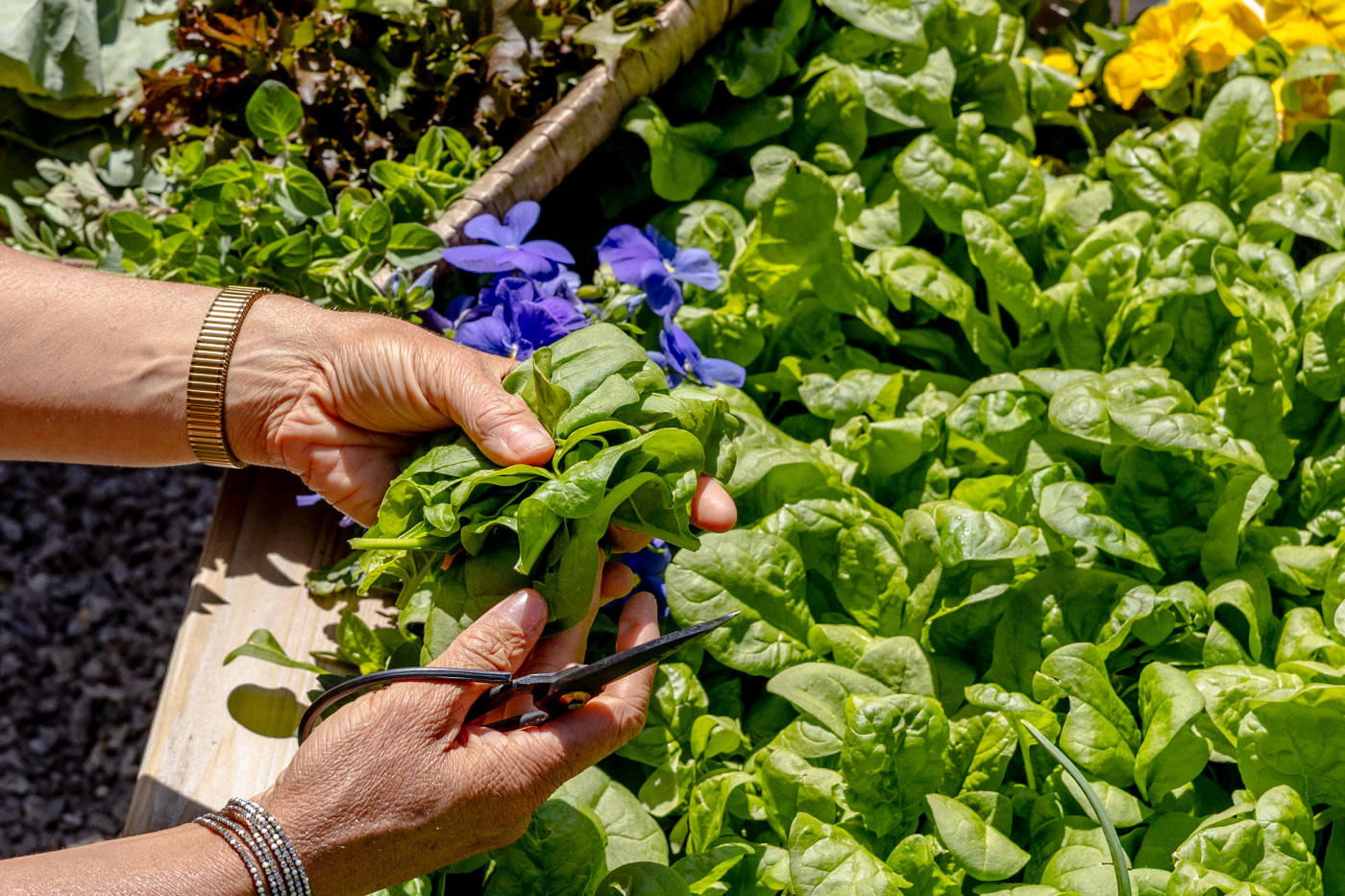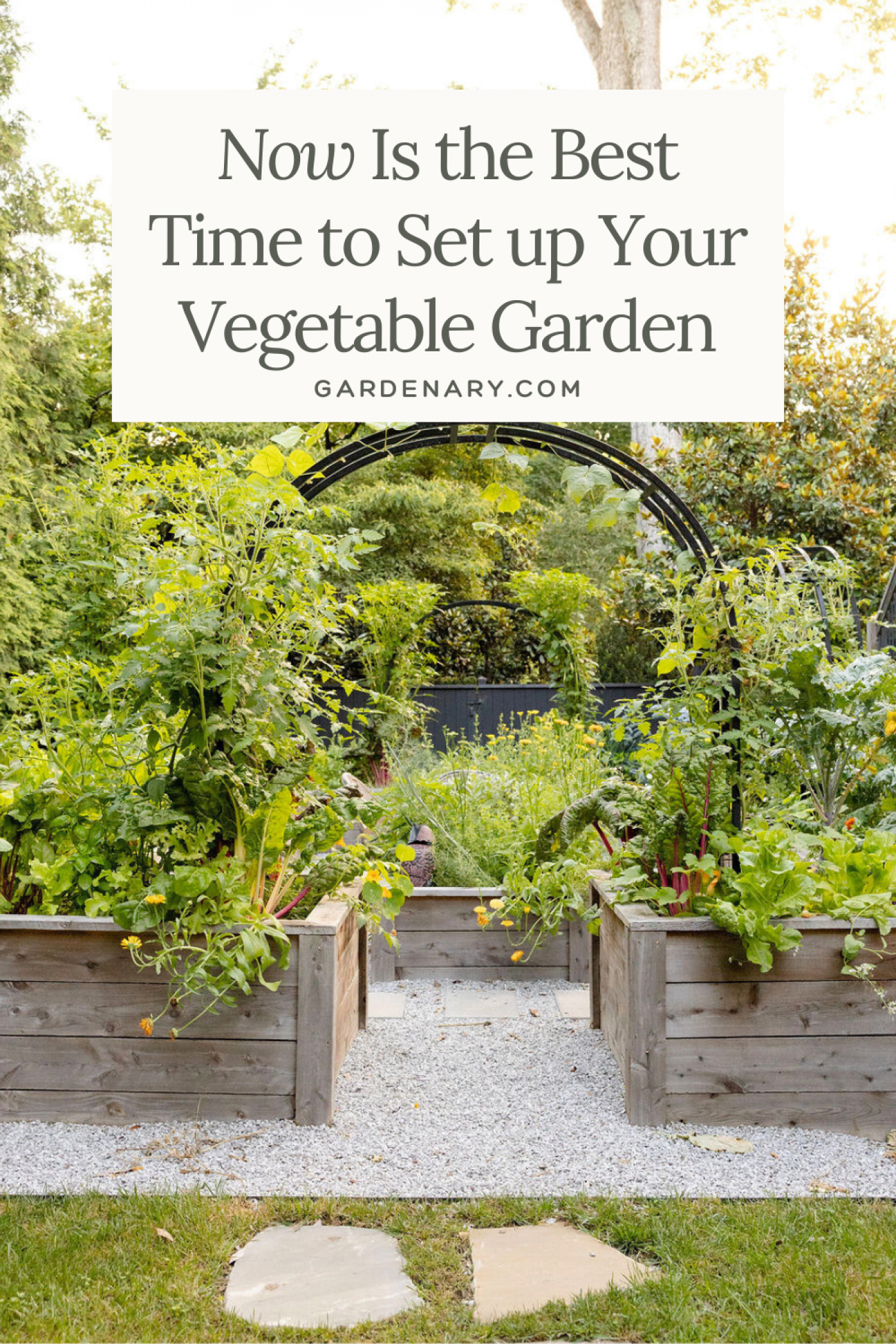Surprise! Fall Is the Perfect Time to Start Your Kitchen Garden
There may not be store displays with top planting choices for October or dozens of ads about setting up your garden in November. No one's advertising garden products next to freshly picked pumpkins. In fact, if you tried to buy some garden supplies right now, you might even get some weird looks, like: “What are you doing? It's not the spring, okay?"
And this is because marketing companies have somehow convinced us that spring is prime gardening season. Even in Houston, where you can garden 12 months of the year, garden commercials don't kick off until around February or March.
I first learned about the beauty of gardening in the fall when my family and I set up our own raised-bed kitchen garden in the fall in Houston. Oh my goodness, am I so thankful we started in the fall instead of waiting for the spring. We got in not one but two entire growing seasons that helped us get accustomed to the sunlight that was in our space and the way things grew in this new climate—which prepared us for what was coming in the spring.
Here are three reasons you should set up and plant your kitchen garden now so you can experience fall gardening magic, too.
Gardenary's Fall Seed Collection
Get 34 Organic Fall Garden Seeds—Plus Planting Plans & 300 Pages of Growing Guides to Harvest More This Season!
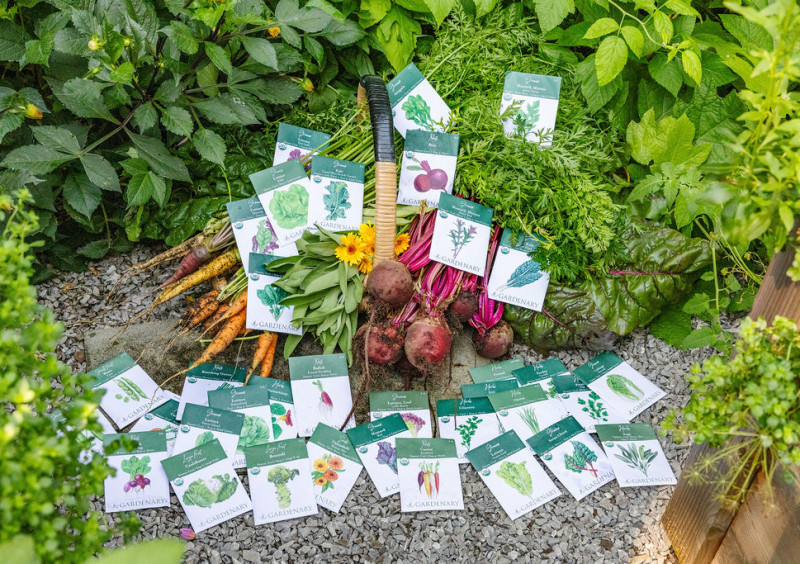
3 Reasons Start Your Garden This Fall
Timing in the Garden Is Everything
A lot of people don’t even start to think about planning their gardens until spring when the weather has already warmed up. While late is better than never, you'll still miss out on early spring plants like peas, onions, and carrots. And if you live in a cooler climate with a short growing season, you'll have significantly reduced your potential gardening time.
Seeds have their preference for a specific time to grow written inside their DNA. This allows them to wake up, sprout, and grow only when there are the right conditions (like temperature and duration of sunlight) for them to flourish. They even know when it's time to produce new seeds or go dormant.
For some plants, planting them in the spring might mean you're too late. When I first started growing native plants and wildflowers in my garden in Houston, I was surprised to find that most of them actually need to be planted in the fall so that they have time to settle in and get cozy before they come up in the spring. If you wait until spring to sow these seeds, you might be waiting an entire year before you see any flowers at all.
And for many of your favorite edible plants, they actually have a very short window of time during which they can be planted in order to grow to their fullest potential while the temperature is still just right. That window could be in the fall, depending on what you want to grow (more on that later).
Take garlic, for example, which is one of our favorite fall plants. If you don't plant garlic in the fall, you might not be able to plant it at all. Planted by single cloves in early fall, garlic settles in without frost or snow protection through the winter and then will produce the most beautiful bulbs in late spring.
It may not be a now-or-never kind of thing, but it's for sure a now-or-next-year one.
Fall Garden Plants Are Fun & Easy to Grow
Watermelon and hot pepper season might be over, but there are still so many fun things you can grow in the fall. In fact, some of the most experienced gardeners will tell you that fall is where the garden party is really at.
Let's start with herbs. Herbs that are easy to grow and thrive in typical fall weather conditions include herbs like dill, cilantro, parsley, chives, sage, and oregano.
→ Explore our complete list of the best herbs to grow in the fall.
Then, there are leafy greens like lettuce, spinach, kale, and Swiss chard. These top the list of foods that taste so much better when picked fresh from the garden—plus, they actually get sweeter and even more delicious after a little bit of frost and cold weather.
→ Explore our top 10 leafy greens to grow in the fall.
Finally, we have root crops like carrots, radishes, beets, and even garlic and onions. (Yes, I know garlic and onions are technically bulbs).
Herbs, leafy greens, and root crops are all great starter vegetables for beginner gardeners, though experience gardeners love growing them, too. They're easier to grow than fruiting plants, they take up less space, and the harvests are so much more prolific. Instead of having to wait 60 to 90 days for your first harvest from those plants, you're going to be harvesting as early as 30 to 45 days after you plant them.


If you're just getting started in the garden or you're hoping to bring your garden skills up a notch, growing leaves and roots will help you find so much more success than if you jump straight into fruits. The reason they're easier is because they're the first parts that grow on the plant, while fruit is one of the last parts. The longer a plant takes to produce the thing that you want to eat, the more opportunities you have for something to go wrong.
That means fruiting plants take the longest time to grow in the garden, they take up the most amount of space, and they're more susceptible to issues. If you start a spring garden and jump right into growing tomatoes (because marketers have convinced us that tomatoes are the quintessential plant to grow in the spring and/or summer) before you've practiced growing leaves and roots in the fall, then you're basically signing up for a marathon before ever having run a 5k or even jogging a mile on a treadmill. Think of low-maintenance fall plants as warm-ups for the marathon that's coming in the spring.
The Gardenary Cool Season Garden Planner
The secret to cool season gardening is knowing your timing, picking the right crops, and staying consistent—this planner walks you through it, step by step.
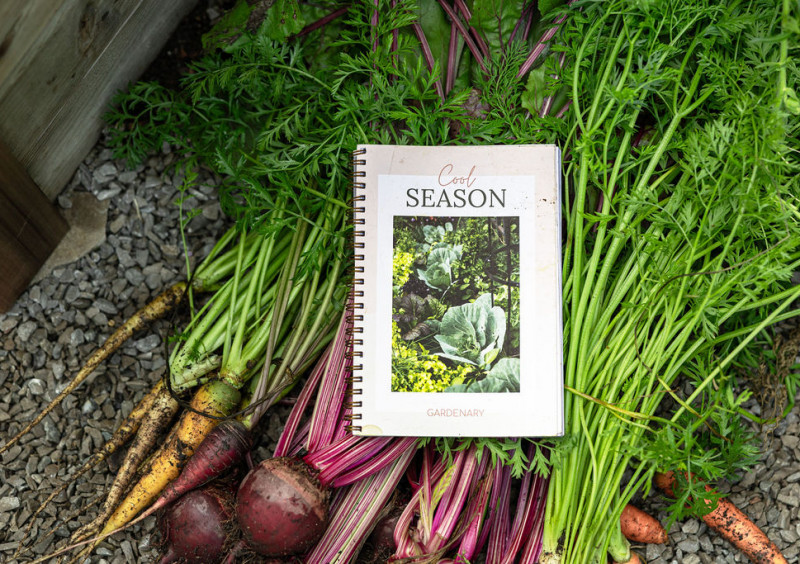
You Don't Want to Miss Out on a Single Growing Season
Not only can you garden in the fall as soon as your garden is set up, you can actually continue to grow some things well into your colder months of the year, especially if you have proper frost protection or live in a milder climate. Skipping a fall garden and waiting until the spring would mean you'd miss out on not one, but two full seasons of plants that you could have been enjoying fresh from your kitchen garden.
When my family and I moved to Chicago in 2019, I didn't get a chance to set up my kitchen garden before winter arrived with a bang. Thanks to rough weather in March, I didn't install my raised beds until mid April.
By the time everything was settled, I had completely missed the spring growing season. It was already time for me to put out plants that would do better in warmer weather. While I was excited to grow tomatoes and peppers, my favorite things to grow are salad greens—lettuces and spinach and kale that could have already been growing for weeks if I'd had a chance to plant them sooner.
If you live somewhere with a mild winter, there are tons of things you can grow in December, January, and even February, which means that waiting for the spring to grow something would make you miss two entire seasons in the garden.
In short, there are way more opportunities within each growing season than you might realize. And even if you didn't plant a single thing, you could tuck your garden up nice and snug for the winter and be ready to grow as soon as the soil warms up in the spring.
What to Plant in Your Fall Garden
If you've read my book Kitchen Garden Revival, you know that I like to divide the garden into seasons: cold, cool, warm, and hot.
Like I said earlier, some plants need to be planted before frost in order to be ready to come out in the spring. If you wait till March to set up your garden, you'll have already missed the window for getting those plants in the ground.
Let's say you take my advice and have your garden all set up by October, early November at the latest. That means your raised beds are installed and filled with great soil. What you can actually plant will then depend on which season you're about to enter.
If you live somewhere with a milder winter (like my friends in Houston), then you're entering your cool season for the winter. The best plants for your fall garden include lettuce and other leafy greens, root crops like radishes and carrots, peas, and herbs. Growing things that prefer cooler weather means you won't even have to worry about frost protection. My family set up our Houston kitchen garden in the fall, and by March, we'd already been growing our cool season favorites for six months.
Gardenary's Fall Garden Guide
Spring gets all the attention, but fall is actually the ideal time to start your kitchen garden. Get expert guidance, done-for-you layouts, and step-by-step tips to help you plant smarter, grow healthier crops, and harvest more—right through fall.

If, however, you live somewhere with a colder climate like Chicago, you can still plant short-season plants such as arugula, 45-day radishes, frost-tolerant leafy greens like kale and spinach, and leafy greens that you could harvest while still small before more severe frost comes. You'll have time to harvest your first leaves and fill yourself up with the good stuff just as cold and flu season arrive. Even in colder climates, your soil will most likely still be workable until the end of November or so, so plant away!
You can also plant in anticipation of your upcoming cold season. Garlic, onions, and other bulbs will lie dormant in the garden throughout the coldest months, and then, once the ground warms a bit toward the end of the season, will start to grow.
That's just growing with a bare garden, but if you want to take it up a notch by installing cold frames or frost cloth, you increase the possibilities for your cold season. Greens, snow peas, and root crops like carrots, radishes, and beets can grow under frost protection—they're not called snow peas for nothing.
For my second winter in Chicago, I planted onion and garlic sets in the late fall. As soon as the soil was workable in February (the soil in a raised bed will warm up before soil in the ground), I planted loads of spinach and lettuce seeds and was harvesting greens by spring break.
That means I was already enjoying a garden-fresh salad a day by the end of March, when most people begin thinking about planting their first seeds. It was a welcome change from the year before and a great reminder why a garden should be set up and already growing before winter. There's absolutely no reason to wait until spring to get it going.
Gardenary's Fall Seed Collection
Get 34 Organic Fall Garden Seeds—Plus Planting Plans & 300 Pages of Growing Guides to Harvest More This Season!

Think of Setting Up Your Garden in the Fall as Getting a Head Start
Many people consider fall too late to start a garden, but I like to reframe it as starting early. It's the best way to get a jumpstart on growing in the new year.
Think about it like this: The time to make the next year the best is not January or February or March. It's now. Set up your kitchen garden now and start building habits that you want in your life into your daily schedule. If you know that you want to eat better, be outside more, spend more time with your family engaged in a meaningful activity, learn new things, gain a deeper appreciation for the wonders of food, do your part for the planet, then why wait? You're going to feel so good on New Year's Day when you run through a list of your goals and say, "Check check, check, check.”
Now, if you're reading this and it's already spring, don't despair. Late is better than never!
Learn More About Fall Gardening
Resources to Help You Start a Vegetable Garden This Fall
What do you think? Have I convinced you that fall is the ideal time to set up your growing space? If so, here are three steps you can take to get set up and going right away.
- If you haven't already done so, check out my book, Kitchen Garden Revival. It walks you through setting up your own beautiful raised bed kitchen garden and then teaches you all about your different growing seasons and what to plant when.
- Find a Gardenary-trained garden coach near you. Even if you're a DIY'er, having a professional help you set up your garden will ensure you end up with a functional space that looks good and will last for a long time. Hiring an expert to help you get it right the first time is so worth your time and money. Even if you just follow them on social media, you'll find a lot of value in someone who's an expert at gardening in your area.
- Grab our Cool Season Garden Planner (this is perfect for fall for those of you in cooler climates and will take you through the winter months if you're in a warmer climate).
- Shop our Fall Seed Collection to get our curated batch of the best herbs, leafy greens, and veggies to grow in the fall.
- Grab our Fall Planting & Growing Guide to get planting, tending, and harvesting guides for 25 fall plants, plus 11 done-for-you planting plans.
- Save your seat for our free Fall Garden Kickoff Workshop.
No matter how you go about setting up your garden, make sure you have a plan in place for what you want to grow this fall and winter before you even think about heading to the plant store. Believe me, I know the temptation to begin any garden project by buying plants. But that's no bueno. Before you buy anything, do some thoughtful planning, and I promise, you'll thank yourself later.
Those are the three reasons to start your kitchen garden in the fall, not in the spring. Come spring, when all your friends are waiting for the weather to warm up and saying, “Man, I really want a garden,” you can say, “Harvest from my garden! I've got kale and spinach and peas and garlic and onions and all the things." Try not to sound too braggy though.
Thank you for growing with me and bringing back the kitchen garden alongside me!



